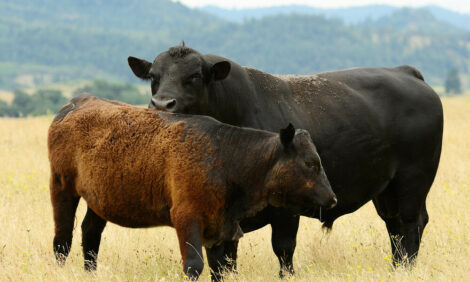



There's Still Time to Identify and Eliminate Weeds in Hay and Pasture Fields
US - Highly productive pastures and hay fields do not happen just by accident. Weed and pest control, nutrient management and properly timed harvests all have their role. Weeds can reduce forage quality, quantity and stand life of desirable plants. Weeds often reduce the palatability of forages and certain weed species are potentially poisonous to grazing livestock making plant identification even more important, writes Mark Landefeld, Ohio State University.
The Ohio State University Extension Weed Control Guide (Bulletin 789) suggests the best way to control weeds in established stands of alfalfa is to maintain a dense healthy forage stand through proper fertilization, cutting management, and insect control. More than 95 per cent of the weeds can be controlled through good management practices.
However, weeds can cause problems. Some alfalfa stands have been reported to lose up to 30 per cent of the stand from infestations of common chickweed. If chickweed emerges through the fall and into spring it develops a thick lush mat that competes strongly with the alfalfa until first cutting hay is made. Purple deadnettle and henbit can cause the same problem. If these weeds persist and then die, summer annual weeds like foxtails, lambsquarter, pigweed or others often take over. Perennial weeds such as dandelion or Canada thistle can also creep into portions of the growing area to reduce yields and/or quality even further.
In many cases, herbicides can be used to eliminate the weed pressure in alfalfa stands if you choose to do so. But, before using herbicides, one should evaluate the existing stand to be sure it is worth the cost of the herbicide and the expense to apply the treatment. Reseeding may be more cost effective.
When weeds invade mixed legume/grass stands it poses a little different problem than pure stands because herbicide management strategies are limited that remove broadleaf weeds without killing your legumes. Grazing management and harvest management can provide help here also if you do not allow weeds to mature enough to produce seed heads, but this is extremely hard to accomplish. Good soil fertility and maintaining soil pH of 6.5-7 helps forage plants vigorously compete against weeds. Spending money to provide good fertility may be the best and most cost effective means to reduce weed pressure in mixed grass/legume stands.
Grass pastures are another place weeds can cause producers problems. There are some invasive's, such as spotted knapweed (Ohio's newest pasture invader. See video below), other herbaceous weeds like thistles, ironweed, foxtail or cocklebur and woody stemmed plants such as multiflora rose and autumn olive that try to take over pastures leaving produces few alternatives but to use herbicides. Some herbicides however, work more effectively than others on given weeds. By identifying target weeds the proper herbicides may be chosen.
Fall can be a good time to eliminate hard to control perennial weeds. Proper recognition and prompt action to control these invaders is important. Eliminating weeds while they are small and few in number will save you a lot of headaches later. So, be aware, monitor your fields regularly, identify weeds in your hay and pasture fields and deal with them in a timely manner.
TheCattleSite News Desk


